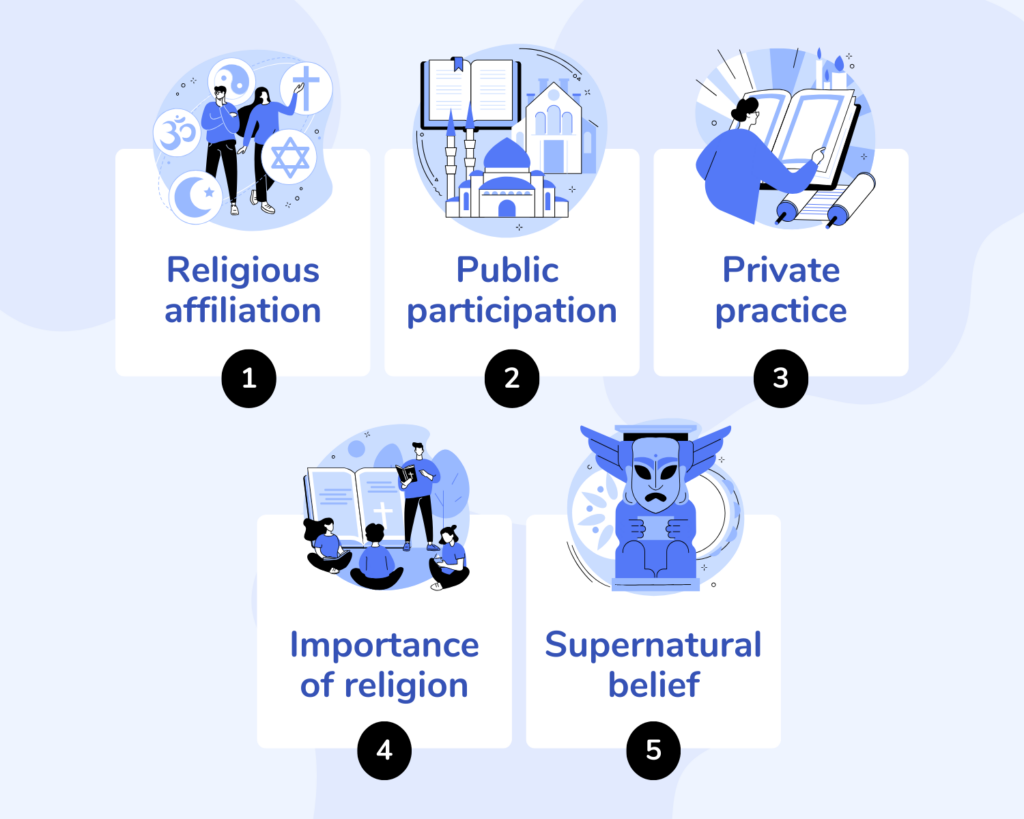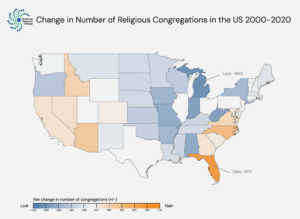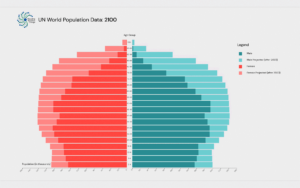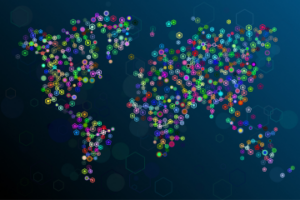Religious affiliation, beliefs, and practices are changing around the world, and more social-scientific research is needed to measure and understand these changes. Religion has a significant influence on public policy, politics, security, and international relations. By advancing the theory and methodology of the scientific study of religion, MRC is poised to make a positive intellectual contribution to the social sciences, demographics, public policy, and public understanding of religion.
The Modeling Religious Change project builds upon traditional demographic methods by incorporating computer modeling and simulation. These tools are widely used in the sciences, but rarely applied to the sociological study of religion. On a national level, religious adherence changes in several ways: births, deaths, conversion in/out, and migration. Each of these dynamics must be considered to truly understand how (non)religion changes.
MRC pairs robust theoretical analysis of religious identity with economic and environmental feedback mechanisms. Our team is building complex artificial societies containing millions of AI agents who interact and change in ways that reflect human psychology and sociology. To create computational simulations of (non)religious identity and change, MRC is looking outside the methodological box to see what new discoveries can be made and how to advance the demographic study of religion.
What does it mean to be religious?
Our project combines traditional demographic methods with simulation approaches to population projection in order to capture the personal, complex, and dynamic nature of religious identity. Traditional demographic projection methods use, at minimum, measures on geographic region, time, sex, and age. These are necessary to identify population cohorts living in a specific place over time, and whether they migrate, have children, and eventually die. By adapting projections from the United Nations (population data) and Pew Research Center (affiliation data), we can build microsimulations that operate on the individual level.
However, once we consider multiple cultures with different religions across periods of radical change, things become much more complicated. In some cultures, it is common to identify with a religion even if you do not practice or hold its beliefs. We have identified five dimensions of religiosity to help us take into account different cultures, as well as social and economic change over time. These dimensions are rooted in the cognitive and emotional functions of human beings, allowing us to create a data-grounded, multidisciplinary, cross-cultural theory of religious change that is applicable to the times, places, and cultures included in our study.

Dimensions of religiosity
- Religious self-identification primarily refers to self-reported census and survey data, commonly available in most countries.
- Public religious participation refers to how regularly individuals engage with a religious community and its rituals.
- Private religious practices include praying, meditating, reading religious materials, making offerings, and maintaining a personal shrine.
- Subjective importance of religion refers to the self-rated importance of religion or spirituality in a person’s daily life.
- Supernatural worldviews represents any belief in invisible religious beings such as angels, demons, gods, or ghosts, as well as belief in an afterlife.
New data, new insights
The data that feeds our computational model of religious change need to be as complex and comprehensive as the populations we are projecting. Our team is collecting, standardizing, and analyzing data from national censuses, ethnographic studies, and surveys on religious or spiritual identity, beliefs, and practices. The databases we create allow us to observe and measure different forms of religious change (such as secularization, conversion to religion, and switching between religions) while taking account of numerous dimensions of religiosity different cultural settings from as early as 1940 forwards. MRC will build novel datasets that inform our own demographic projections and will provide valuable insights into the demography of religion beyond our project.
Simulating societies
A combination of these datasets become the basis for analyzing the result of the country-specific simulations, which project religious change by re-creating the real-world phenomena of religious change in an artificial society. Societies are comprised of diverse individuals, each one characterized by their own goals, relationships, and personality. MRC uses cutting-edge agent-based models to incorporate and track individual characteristics, allowing us to measure the impact of complex (societal, environmental, economic) factors of personal (non)religious identity and general religious change. Agent-based models operate by tracking the actions and interactions of individual “agents” in the model. These agents respond to external environmental and social factors and interact with each other according to the model’s causal architecture, or rules. Society, in all its complexity, is simply the combination of many, many individuals who belong to families, neighborhoods, workplaces, and social networks. Complex outcomes emerge from unique combinations of underlying rules. Aggregate rates of religious switching, for instance, arise out of the combined results of a multitude of individual decisions. For each country, the simulation runs millions of times to generate data for each combination of parameter settings.
The Assumption-Relative Religious Demographics Information System (ARDEMIS) is a web-based system for estimating and visualizing the impact of measurement and ruleset assumptions on religious demographic projections. With ARDEMIS, users will be able to compare projections of population dynamics and estimates of religiosity across different measures and data sources. By toggling model options, users can see how methodological and theory-derived assumptions influence the outcome of population projections. Each change in a parameter or assumption alters the forecast of a religious population. Anyone can explore the parameters visually and see how results change when taking specific theories and methods into consideration. This will help demographers compare their projections with other possible ways of predicting (non)religious change.






